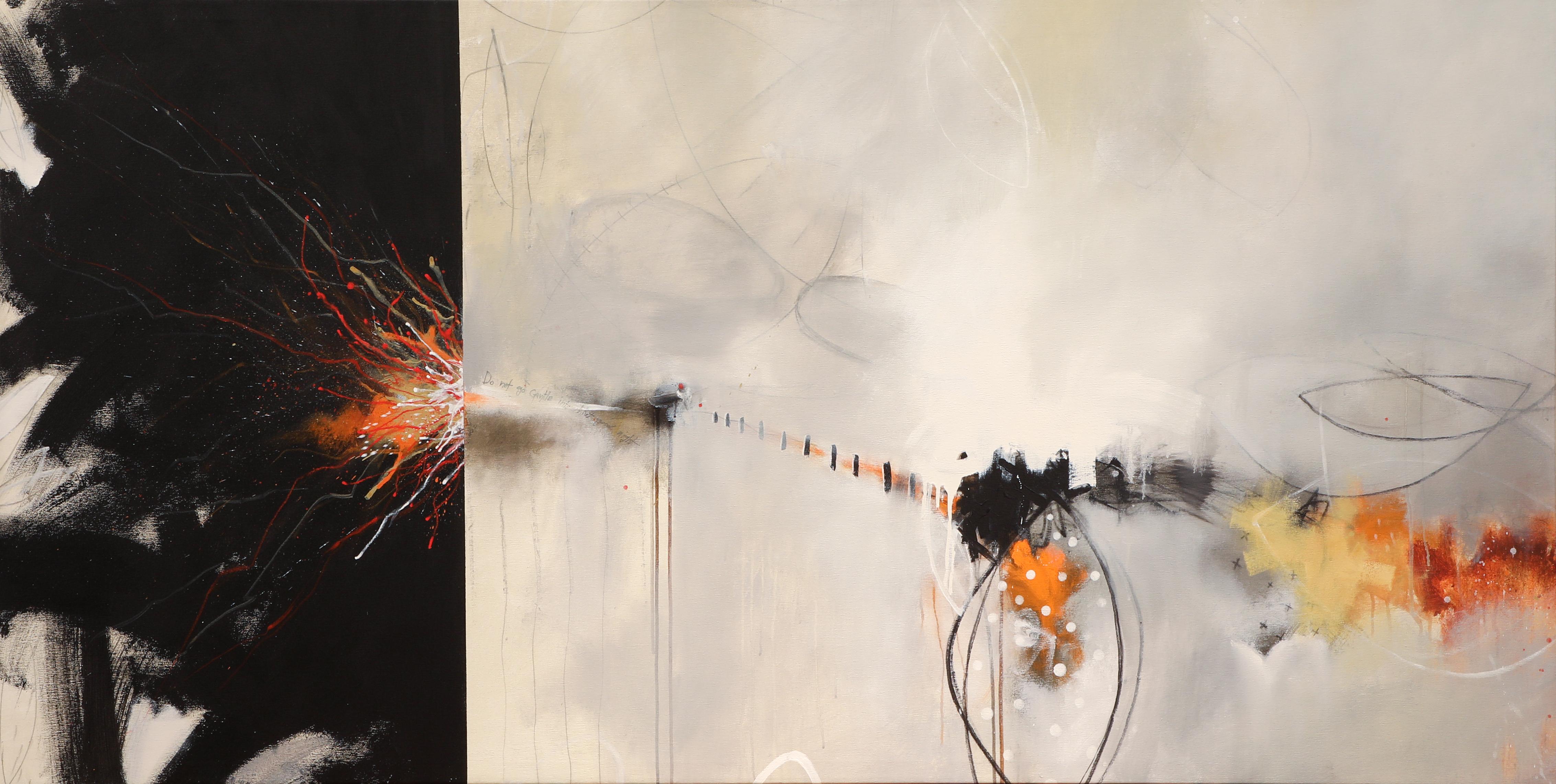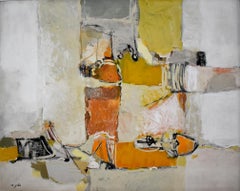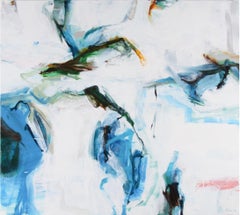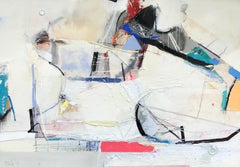Want more images or videos?
Request additional images or videos from the seller
1 of 4
Behzad TabarReaching Out
$5,200
£4,006.46
€4,576.62
CA$7,444.71
A$8,119.95
CHF 4,269.40
MX$97,443.01
NOK� 53,905.78
SEK 50,279.38
DKK 34,180.65
About the Item
About Behzad Tabar
My background is in fine and graphic arts, working in a wide range of styles and mediums. My painting has evolved from realism, to surrealism, to abstract. I am motivated by the relationship of colors and space, and our emotional reaction to the way they intersect. The themes I explore include the interplay of light and shadow, duality of extremes, and organic references in surreal environments.
- Creator:Behzad Tabar (Iranian, American)
- Dimensions:Height: 48 in (121.92 cm)Width: 48 in (121.92 cm)Depth: 2 in (5.08 cm)
- Medium:
- Movement & Style:
- Period:
- Condition:
- Gallery Location:Atlanta, GA
- Reference Number:1stDibs: LU155528661862
About the Seller
5.0
Vetted Professional Seller
Every seller passes strict standards for authenticity and reliability
Established in 2008
1stDibs seller since 2021
19 sales on 1stDibs
- ShippingRetrieving quote...Shipping from: Atlanta, GA
- Return Policy
More From This Seller
View AllEmergence
By Behzad Tabar
Located in Atlanta, GA
About Behzad Tabar
My background is in fine and graphic arts, working in a wide range of styles and mediums. My painting has evolved from realism, to surrealism, to abstract. I am mo...
Category
21st Century and Contemporary Abstract Figurative Paintings
Materials
Acrylic
$6,500
Unruffled
By Behzad Tabar
Located in Atlanta, GA
About Behzad Tabar
My background is in fine and graphic arts, working in a wide range of styles and mediums. My painting has evolved from realism, to surrealism, to abstract. I am mo...
Category
21st Century and Contemporary Abstract Figurative Paintings
Materials
Acrylic
$6,500
Drifters/Flutter
By Behzad Tabar
Located in Atlanta, GA
About Behzad Tabar
My background is in fine and graphic arts, working in a wide range of styles and mediums. My painting has evolved from realism, to surrealism, to abstract. I am mo...
Category
21st Century and Contemporary Abstract Figurative Paintings
Materials
Acrylic
Reminiscence
By Behzad Tabar
Located in Atlanta, GA
About Behzad Tabar
My background is in fine and graphic arts, working in a wide range of styles and mediums. My painting has evolved from realism, to surrealism, to abstract. I am mo...
Category
21st Century and Contemporary Abstract Figurative Paintings
Materials
Acrylic
$7,800
Do not go gentle
By Behzad Tabar
Located in Atlanta, GA
About Behzad Tabar
My background is in fine and graphic arts, working in a wide range of styles and mediums. My painting has evolved from realism, to surrealism, to abstract. I am mo...
Category
21st Century and Contemporary Abstract Abstract Paintings
Materials
Acrylic
Bridge
By Behzad Tabar
Located in Atlanta, GA
About Behzad Tabar
My background is in fine and graphic arts, working in a wide range of styles and mediums. My painting has evolved from realism, to surrealism, to abstract. I am mo...
Category
21st Century and Contemporary Abstract Figurative Paintings
Materials
Acrylic
$5,200
You May Also Like
Untitled
By Jacob El Hanani
Located in London, GB
JACOB EL HANANI b. 1947
1947 Casablanca (Israeli)
Title: Untitled, 1968
Technique: Signed and Dated Acrylic on Canvas
Size: 73 x 93 cm. / 28.7 x 36.6 in.
Additional Information...
Category
1960s Abstract Abstract Paintings
Materials
Acrylic
A reach
By Michael Rich
Located in Fairfield, CT
In paintings, drawings and prints, Michael Rich explores the beauty and irascibility of the natural world through an approach to painting that is visceral, physical and colorful. Of...
Category
2010s Contemporary Abstract Paintings
Materials
Canvas, Oil
$11,500
Over There
By Plamen Bonev
Located in Sofia, BG
"Over There" is a modern, abstract art line painting by Maestro Plamen Bonev,
The painting is unframed.
“The impressions of Plamen's paintings on the viewer is so mighty, mesmerizing, grand, that it paralyzes the imagination with its perfection.
His paintings, colors bring emotion happiness, love and energy, represented by the vast creative power of his talent.”
About Plamen Bonev
Born in 1954 year in Sofia-city. 1979- graduated from the Academy of Fine Arts – Sofia, major “Scenography” (Stage Design) 1985 – Member of UBA /Union of the Artists in Bulgaria/, section “painting”. He works in the fields of painting, scenography, sculpture etc. He has participated in over 100 regional, national and international exhibits, workshops, campaigns and others with his painting (landscape art), scenography, drawings, plastic arts etc. He has designed the costumes, puppets and scenery, of the puppet and drama theater, for over 35 performances at home and abroad. Since 1991 he is a teacher of art/painting at the Summer Academy of Luxembourg. He is a winner of 10 awards for painting (landscape art) and 3 for scenography/decor art. His works are exhibited at the National Art Gallery, Sofia–city Art Gallery, many galleries in the country, Pushkin museum in Moscow, the galleries in Olsztyn and Reszel – Poland, the town-hall of Dudelange – Luxembourg, as well as well as owned by private collectors in the country and abroad – Switzerland, France, Germany, Russia, Japan, Greece, Argentina, Uruguay, Hungary, Luxembourg, Finland, Poland, Italy, Belgium, Romania, Czech Republic etc.
Education:
Master of Fine Arts from National Academy of Fine Art, Sofia in 1978, scenography.
Events:
“Paintings” awards:
1984 - award "Struma", 3rd place - Bulgaria
1985 - award "Struma", 1st place - Bulgaria
- award "Labor Day Celebration", 1st place - Blagoevgrad, Bulgaria
1990 - award "Union of Artists" - Bulgaria
- the major award "Struma" - Bulgaria
2000 - award "May 24", 1st place - Bulgaria
2002 - the major award "Struma" - Bulgaria
2004 - the major award "Struma" - Bulgaria
2012 -award of the town of Pleven - Bulgaria
- award of the International Exhibit - Stara Zagora, Bulgaria
- award "Struma", 1st place - Bulgaria
2014 - award "May 24", 1st place - Blagoevgrad, Bulgaria Less
Exhibitions:
Personal exhibits:
1982 - UBA – Blagoevgrad, Bulgaria
1984 - UBA – Blagoevgrad, Bulgaria
1985 - “Shipka” 6 – Sofia, Bulgaria
1987 - UBA – Blagoevgrad, Bulgaria
1990 - “Svitzer” gallery – Luxembourg
1991 - casino 2000 - Luxembourg
“Vandergeeten” gallery - Belgium
1993 - “Svitzer” gallery – Luxembourg
puppet theater– Blagoevgrad, Bulgaria
party club – Sofia, Bulgaria
1995 - “Zhanet” gallery – Plovdiv, Bulgaria
“Rosita” gallery – Sofia, Bulgaria
1996 - “Sentimie” cultural center - Switzerland
1997 - “Dominik Lang” gallery – Luxembourg
1998 - “Lo-moaten” gallery - Switzerland
“Picasso...
Category
2010s Abstract Abstract Paintings
Materials
Canvas, Oil
Fantasia, Painting, Acrylic on Canvas
By Behshad Arjomandi
Located in Yardley, PA
Original abstract painting. It was painted in multiple layers with palette knife and brushes. The artwork is signed on the back and includes a Certificate of Authenticity. The pai...
Category
2010s Abstract Abstract Paintings
Materials
Acrylic
Abstract, Painting, Acrylic on Canvas
By Pinar Akbaba
Located in Yardley, PA
All about dreams... Acrylic on canvas will be sent rolled in a tube. :: Painting :: Abstract Expressionism :: This piece comes with an official certificate of authenticity sign...
Category
2010s Paintings
Materials
Acrylic
Reaching to one point - Painting, Acrylic on Canvas
Located in London, GB
What sets Nadira apart from her artistic peers, however, is the femininity of touch in her work. The Iraqi novelist, critic and artist, Jabra Ibrahim Jabra, wrote in 1983, ‘There is ...
Category
2010s Abstract Abstract Paintings
Materials
Acrylic













